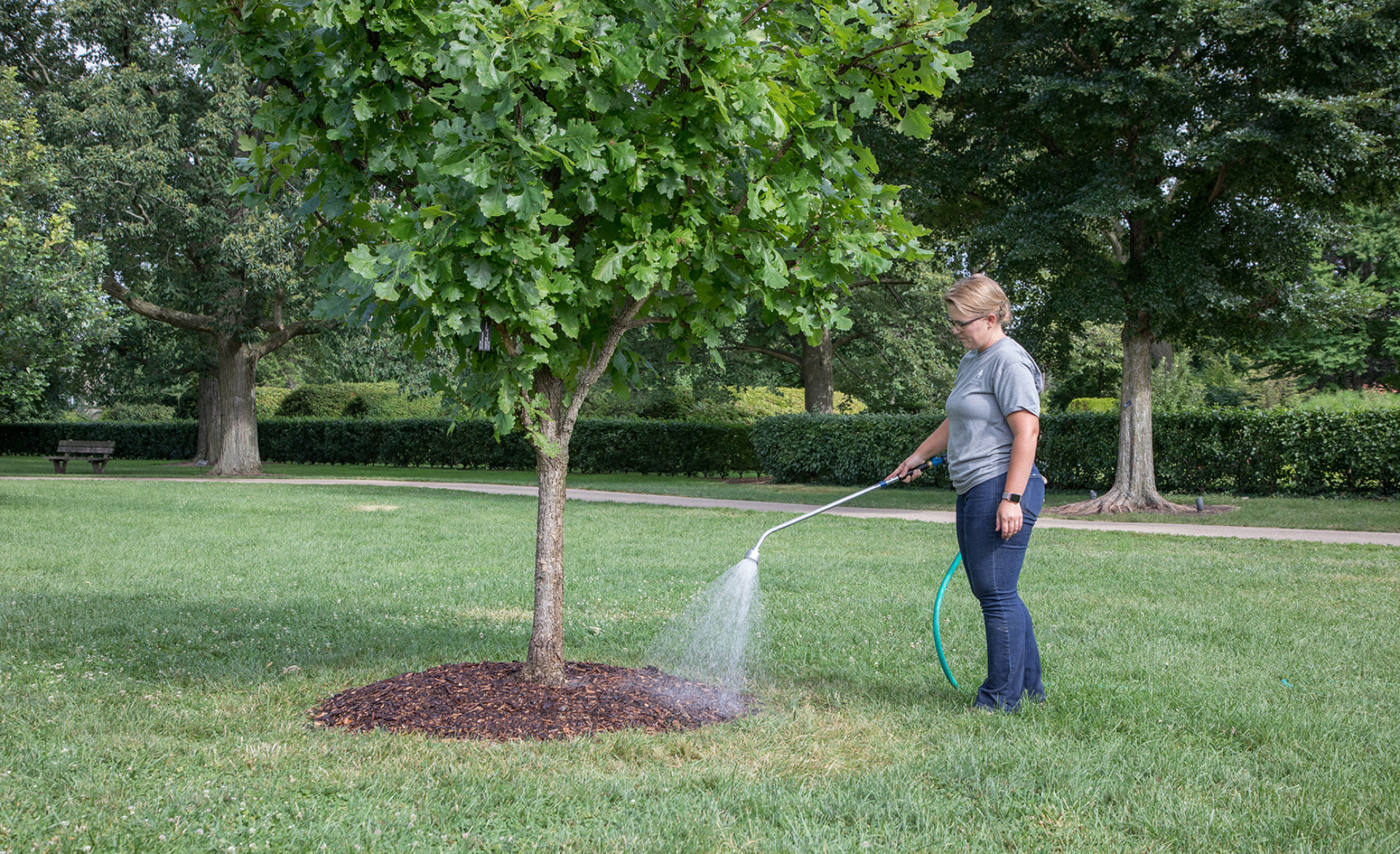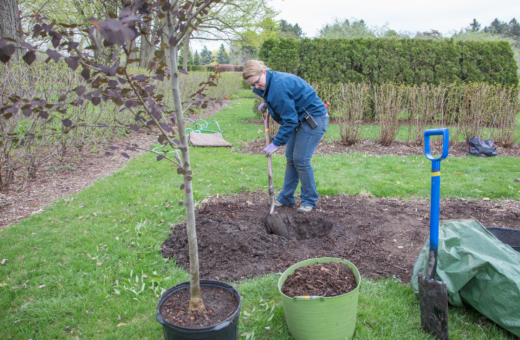Proper watering techniques
April 27, 2021
Trees and plants depend on water, and in the hot summer months, they depend on you to give them the water they need. These tips will help you make sure your trees and plants are getting enough water when they need it.
If you water thoughtfully, you’ll put water where your plants really need it and avoid wasting it.
Water the soil, not the leaves. Trees and plants can only absorb water through their roots. If you’re watering by hand with a hose nozzle or watering wand, direct the water toward the base of the plant. Soaker hoses, which are laid on the soil surface to slowly seep water, are more efficient than sprinklers, although a sprinkler can cover a wide area. Be aware that the spray from a sprinkler can be blocked or diverted by trees, shrubs, or even the large leaves of some plants such as hostas.
Check for soil moisture. What matters to a plant is how much water is actually in the soil. To check, use a trowel to dig down. If the soil feels dry three or four inches below the surface, water. A common rule of thumb is that most plants need the equivalent of one inch of rainfall a week, on average—enough to soak into the soil about six inches. However, in hot weather, plants may need more. Some areas of your yard may be dryer than others, because trees, roof overhangs, and buildings can intercept rainfall.
Let the water soak in deeply. A light daily sprinkle won’t penetrate very far. That’s not good for plants: If water is only to be found at the surface of the soil, roots won’t grow any deeper. For healthier roots and more drought-tolerant plants, let the soaker hose or sprinkler run long enough for water to soak in about six inches, and then don’t water them again for several days. That will encourage plants’ roots to grow longer and deeper, increasing their ability to soak up and hold water.
Young plants need more water. It takes a while for roots to grow enough so trees and other plants can absorb and store sufficient water. Until then, they need more frequent watering than mature plants.
Trees need watering. It’s especially important for young, newly planted trees, which don’t have many roots yet. Let the hose dribble slowly into the soil, moving it around to moisten the soil around the trunk. A good dose for a young tree a few feet tall is about 10 gallons—roughly the amount you’ll get from a hose running at medium pressure for five minutes.
Water parkway trees too. The trees in front of your house add enormously to its beauty and value, so it’s in your interest to water them, even if they are on municipal land. A parkway limits the space for roots, so it’s an especially difficult place for a tree to survive. Even mature trees need watering in hot, dry weather. If the hose won’t reach, pour several buckets of water slowly into the soil around the tree.
Spread mulch. A layer of organic mulch, such as shredded wood, bark, or leaves, will insulate the soil and roots against the heat and prevent moisture from evaporating from the soil surface. Don’t pile it high. It should be an even layer, no more than three to four inches deep around trees and one to two inches deep in garden beds.
Don’t get stuck in a watering rut. Avoid creating a routine of watering at the same time every day or every week. Instead, get in the habit of paying attention to the soil and the weather so you can water when the plants really need it.
Containers need frequent watering. Because there is little soil in a pot to hold water, container plants need to be watered more frequently than plants in the ground. In hot weather, they may need to be watered daily. They also need more water later in the season as they grow larger. Check for moisture often by sticking a finger in the potting mix an inch or two down.
Be wary about rain. If it rains, you may think you don’t need to worry about watering. However, it may not have rained enough to really soak into the soil. An inexpensive rain gauge can measure how much rain really fell in your yard, but the most useful information comes from digging down and checking for soil moisture.
Sprinkle early. In summer, the best time to set up a sprinkler is the early morning, before the day gets hot. The water will have time to soak into the soil so it will be available for plants to cool themselves. In the middle of the day when the sun is hottest, much of the water from a sprinkler will evaporate before it soaks in. Watering early in the day can save water and money.
Don’t sprinkle at night. In the cool of the evening, water won’t evaporate from the leaves and it may encourage disease. Water in the evening only at soil level—for example, by trickling water from the hose for a tree or by using soaker hoses.
Why do plants need water? All plants, from ground covers to towering trees, depend on it to carry nutrients through their stems to their leaves. It’s also is essential for photosynthesis, the chemical process in the leaves that transforms water, sunlight, and carbon dioxide into plant food.
Water also keeps plants cool. Tiny pores in plant leaves allow water to evaporate, which cools the leaves off. That evaporation also creates the suction that pulls water up from the roots into the leaves. Water-filled cells—like little water balloons—are all that keeps green plants standing up. If water doesn’t fill the cells, the plant will wilt. Many plants are 95 percent water.



